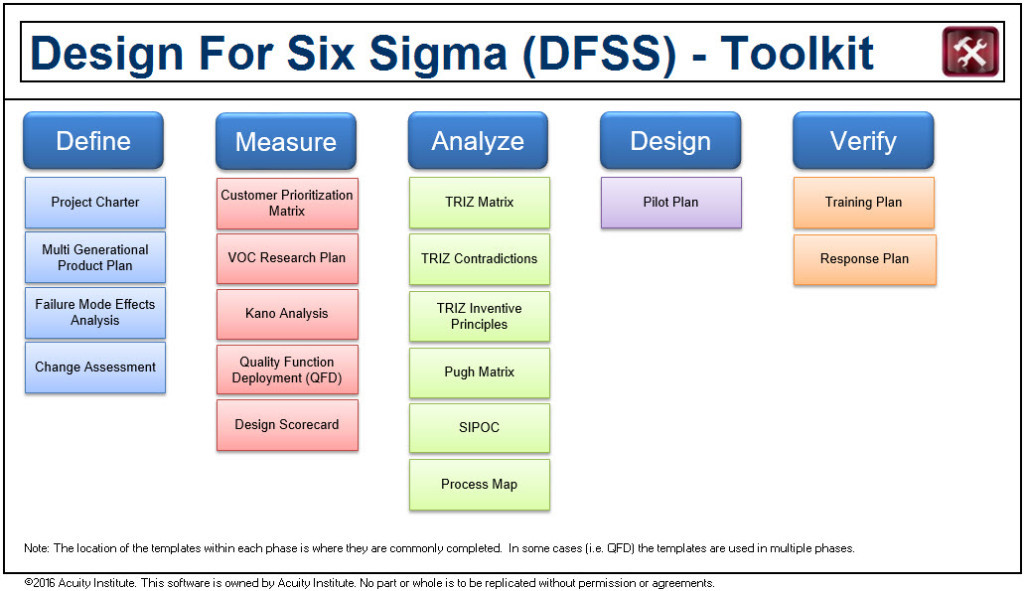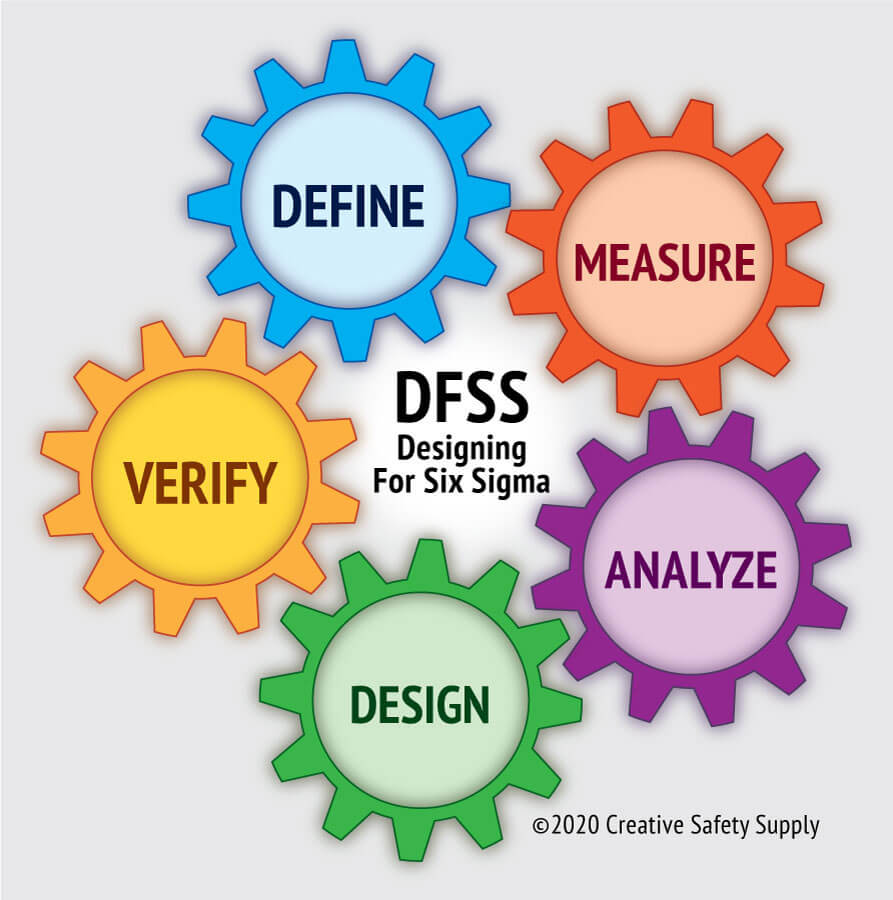DFSS stands for Design for Six Sigma. It is a methodology used within the Six Sigma framework that focuses on designing or redesigning products, services, or processes to achieve high levels of quality and customer satisfaction. DFSS aims to proactively prevent defects or errors rather than relying on post-production inspections or corrections.
The traditional Six Sigma methodology, known as DMAIC (Define, Measure, Analyze, Improve, Control), is primarily used for process improvement and problem-solving. On the other hand, DFSS is applied during the design phase of a product, service, or process. It emphasizes understanding customer needs, translating them into specific design requirements, and developing innovative solutions that meet or exceed those requirements.
DFSS typically consists of the following phases:
- Define: Clearly define the goals and objectives of the design project, as well as the customer requirements and expectations.
- Measure: Identify and prioritize critical customer needs, also known as Critical-to-Quality (CTQ) parameters. These parameters define the characteristics that are most important to the customer.
- Analyze: Conduct a thorough analysis of the current design or existing alternatives, identify potential design concepts, and evaluate their feasibility and potential impact on CTQ parameters.
- Design: Develop detailed design alternatives based on the analysis conducted in the previous phase. This involves using tools such as QFD (Quality Function Deployment), FMEA (Failure Mode and Effects Analysis), and DOE (Design of Experiments) to optimize the design.
- Verify: Validate the design through simulation, prototyping, or other testing methods to ensure that it meets the defined CTQ parameters and satisfies customer requirements.
- Validate: Implement the final design and monitor its performance during the initial stages of production or implementation. This phase involves assessing the design’s ability to consistently meet customer expectations and making necessary adjustments if needed.
DFSS aims to reduce the likelihood of design-related defects or deficiencies, thereby improving customer satisfaction and minimizing the need for costly redesign or modifications after the product or service has been launched. It encourages a proactive approach to quality by integrating the voice of the customer into the design process.
 (909) 987-1774
(909) 987-1774 Email Us
Email Us









